Digital agriculture uses new and innovative technologies integrated into a system to enable farmers and other stakeholders in the agricultural value chain to improve food production. Most farmers today decide how much fertilizer to apply based on measurements, experience, and recommendations. It is implemented, but usually, the results are not seen until harvest time.
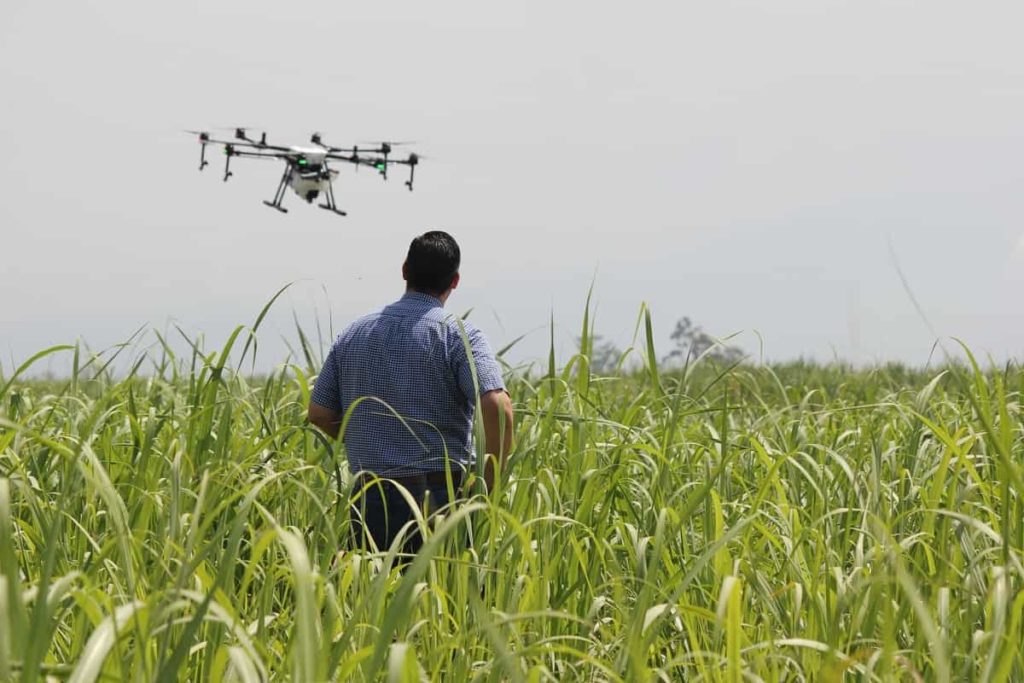
How digital agriculture/farming helps rural farmers
What is digital farming?
Digital farming is best defined as technology such as data science, digital communication channels, automation, and sensors to improve agricultural outcomes. Popular reasons for adopting digital farming include crop and livestock management, pest control, and ease of communication within the industry.
Many terms are related to digital agriculture, and agriculture is the most prominent. With the help of sensors embedded in farm machinery, precision agriculture has been used for two decades to apply resources in a highly controlled and specific manner. Farm machinery collects data on local weather or soil conditions, which then drives farm decisions.
In recent years, such data have been combined with remote sensing data, including data collected from atmospheric (climate) satellites. The resulting large datasets can be processed using advanced computing to generate even more accurate insights into farm management decisions, such as when to plant, apply chemicals, irrigate, etc.
Why is digital technology important in agriculture?
The application of digital technology in agriculture plays an important role in generating data and developing advanced analytics that allows farmers to make smarter farming decisions and benefit from the economical use of inputs and labor. It brings significant benefits to farmers and wider social benefits worldwide. It also enables organizations to share information across traditional industry boundaries to open up new, disruptive opportunities.
The rise of digital farming critically examines social science’s potential agricultural revolution. It examines the role of social interaction between farmers, universities, and corporations and social values. Digital farming should also be about an operational system. Therefore, the following requirements ensure that the system will span millions of acres, deploy across multiple crops, provide an end-to-end solution, exist within an ecosystem, and even simultaneously serve thousands of stakeholders’ diverse agricultural and economic needs.
In extraordinary summary, it should be more than a curiosity for the sophisticated geek and consistently serve the small grower to the largest. Digital farming, at the next lowest level, must manage, analyze, and orchestrate the timely delivery of information from the data entities that make up a field. It must be about the division of the field into distinguishable, geographically located, and individually uniform units of productive assets. This requirement is about each unit as a productive asset.
The accurate location ensures that information about that unit is measured, collected, analyzed, and processed for the same location and is distinct from all other surrounding assets. It is about being individually uniform and uniform in size, shape, and depth so that the system can analyze the same unit repeatedly. It means that each variable in impact and depth will have the same variable value for a unit of production.
In case you missed it: Digital Innovation In Agriculture And Farming
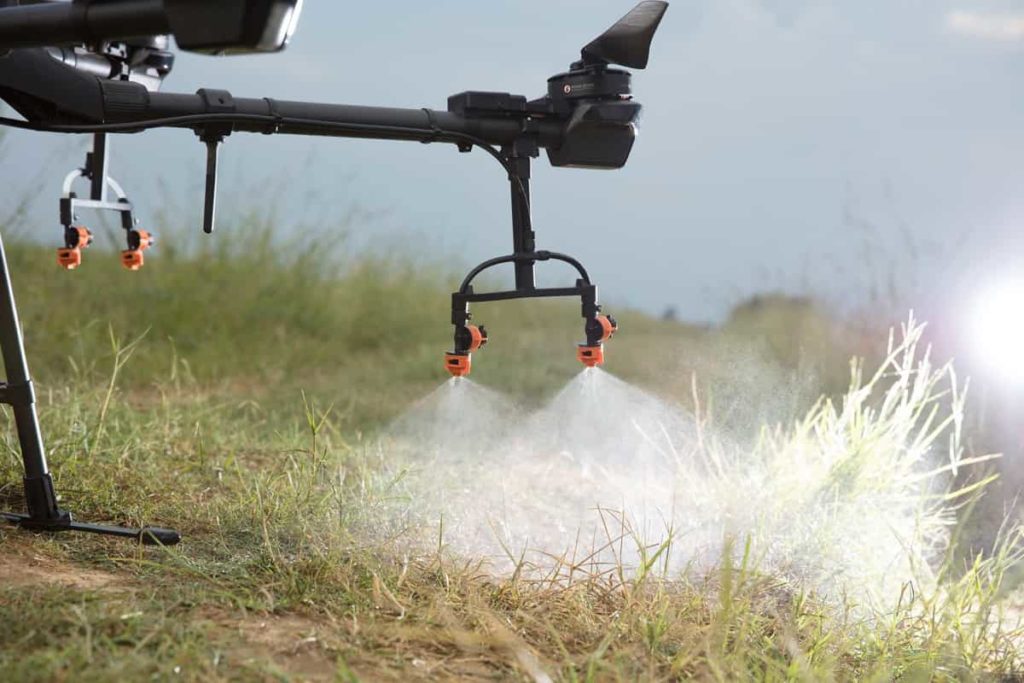
Where is the adoption of digital agriculture growing?
Digital farming is widespread in the USA and most countries worldwide, where technology is prevalent. These technologies are used globally, including sensors, communication networks, aerial vehicles, robotic machinery, and other AI technologies. The amazing thing about digital farming is that it is useful regardless of the size of the farm. Agricultural leaders largely see the benefits at the small farm level. It is used on farms and is popular in agricultural research laboratories and universities with an agricultural focus.
Small-scale farmers love digital agriculture to help them decide to increase a cow’s milk production, raise healthy calves, or improve crop yields. The reasons why more farmers adopt digital farming can be advanced. Digital agriculture is often used to describe the different uses of data collected through the different types of technology used in the sector. However, it is also about how the technology integrates and works across the supply chain, from the paddock to the consumer.
Digital agriculture can help the day-to-day management of farms and improve traceability, security, and automation. It includes animal monitoring, prescriptive fertilization programs, and geographic mapping. If you are thinking about adding digital agriculture to your business, you should consider:
- Return on investment.
- Integrating data into decision making.
Examples of digital agriculture practices that help rural farmers
Agricultural biotechnology is a range of tools, including traditional breeding techniques that modify organisms, or parts of organisms, to make or transform products. Improving plants or animals or developing microorganisms for specific agricultural uses. Precision Agriculture (PA) is an approach where precise amounts of inputs are used to achieve higher average yields than conventional agriculture techniques such as agroforestry, intercropping, crop rotation, etc. Digital and wireless technologies for data measurement, weather monitoring, robotics/drone technology, etc.
Benefits of digital agriculture for rural farmers
- Improved management and decision-making processes
- Improved efficiency through more targeted applications
- Increased productivity and profitability Improved marketing
- Real-time information
- Improved record keeping
- Management of risks and uncertainties
- Reduced regulatory burden
- Reducing the intensity of labor and increasing the productivity of agricultural production
- Increasing the efficiency of the resources used, adapting biological products to regional characteristics
- Individual approach to keeping and feeding livestock and poultry
- Increasing the quantity and quality of the harvest, a reduction in yield deviations
- The ability to manage the quality of the produced products and genetic development through the introduction of modern breeding
- Digital farming saves 85% water consumption and 50% energy, increases crop yield by 40%, and reduces human error by 60%.
In case you missed it: A Guide to Understand Importance of Drones in Agriculture/Farming: Advantages, Applications, and Different Types
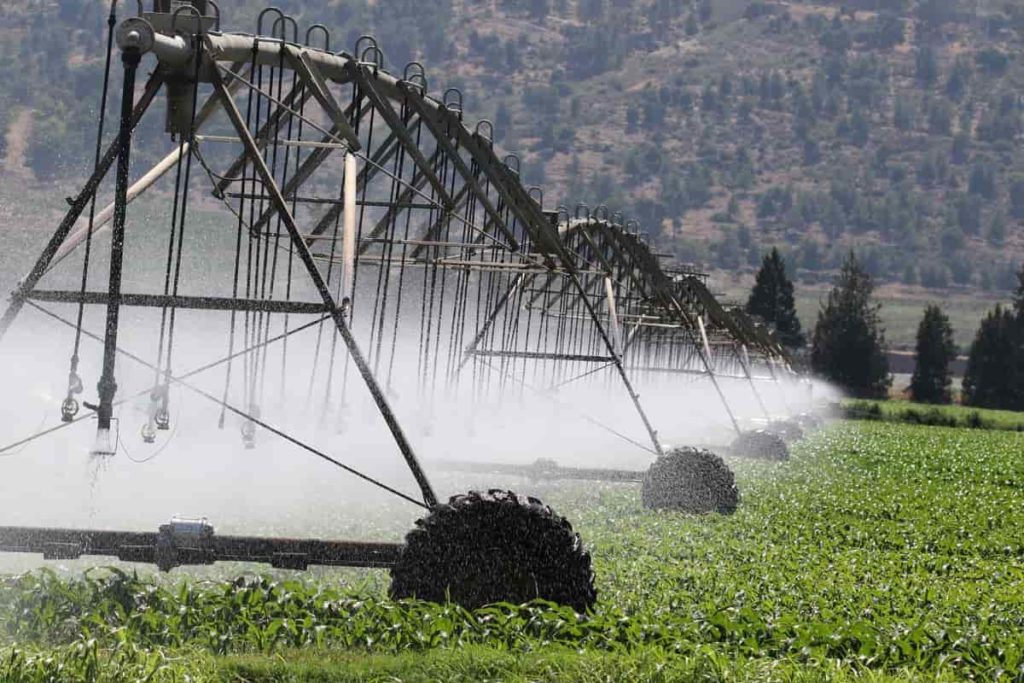
What impact does digital agriculture have on rural communities?
The digital agriculture has the potential to provide economic benefits through improved and increased productivity, cost efficiency, and social and cultural benefits through increased market opportunities, communication, and inclusion. Digital technology can help governments improve the efficiency of existing policies and programs and better design them.
For example, freely available and high-quality satellite imagery dramatically reduces the cost of monitoring many agricultural activities. Digital farming integrates precision farming and smart farming and is achieved through intelligent software and hardware implementation. Precision farming is popularly defined as a technology-driven approach to farm management that observes, measures, and analyzes the needs of individual fields and crops.
Smart farming focuses more on using data obtained through various sources (historical, geographic, and instrumental) in managing farm activities. Digital agriculture can be done by installing networked ‘smart’ devices as part of IoT (Internet of Things), or they can be agtech software as a service-based.
What does digital agriculture involve?
Digital agriculture, sometimes known as smart farming or e-agriculture, are tools that digitally collect, store, analyze and share electronic data and information in agriculture. Technology can allow farmers to assess the general health of their crops better. Devices like drones can be used to predict soil quality and plan seeding patterns. Today, animations can show crop growth, enabling better management. It also helps farmers monitor pest populations and weed activity on their land. Farmers will be able to understand the performance of every decision in a way we never could before.
Digital technology has changed how managers make decisions and the methods and approaches to achieving goals. Farmers benefit from digital agriculture transformation as they will get better crops and new ways to manage them. It improves productivity and information by eliminating paper forms and collecting paper data. It is replaced by a mobile form and a database that stores the form information. Data collected in the field can be sent immediately to a central office or users, improving communication accuracy.
Applications of digital agriculture
Factors such as pollution from pollutants (washed from land into the water by rain) and disease have varying effects on production. Oyster farming is an example of this. It enables more accurate predictions about when water contamination is high or disease outbreaks are likely so farmers can take proactive measures to reduce oyster losses.
Digital agriculture, applying technological interventions based on remote sensing, soil sensors, unmanned aerial surveys, and market insights, allows farmers to collect, visualize and evaluate crop and soil health conditions at various stages of production. They can serve as early indicators to identify potential challenges and provide options to address them in a timely manner.
Artificial Intelligence/Machine Learning (AI/ML) algorithms to improve crop yields, control pests, help in soil testing, provide actionable data for farmers and reduce their workload are real. Can generate actionable insights in time. Blockchain technology offers tamper-free and accurate data on farms, inventories, instant and secure transactions, and food tracking. Thus, farmers do not need to rely on paperwork or files to record and store important data.
Digital technologies that are transforming agriculture
Robotics: Agricultural robots automate farmers’ slow, repetitive, and tedious tasks, allowing them to focus more on improving overall production output. The most common robots in agriculture are used for:
- Harvesting and picking
- Weed control
- Autonomous mowing, pruning, seeding, spraying, and thinning
- Phenotyping
- Sorting and packing
- Utility platforms
- Harvesting and picking are the most popular robotics in agriculture. One of the applications that robots can achieve due to their accuracy and speed is to improve yield size and reduce crop waste left in the field.
In case you missed it: Drone Farming, Drone Technology In Agriculture
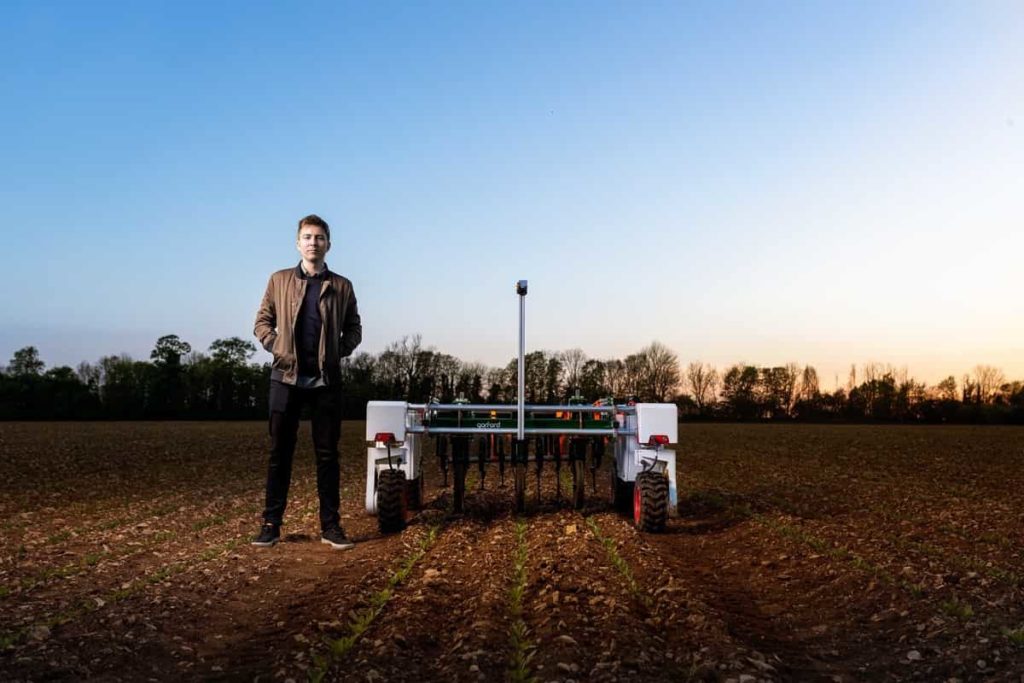
IoT and Sensors: The ability to track production and live animals, detect health issues and assess the environment within the farm or obtain real-time soil moisture from climate/sustainability, animal welfare major challenges important to deal with and to track in the food supply chain.
IoT in agriculture uses robots, drones, remote sensors, and computer imaging along with ever-evolving machine learning and analytics tools to monitor crops, survey and map fields, and provide data to farmers so that both time and money can be saved. Precision agriculture and predictive data analytics go hand in hand.
While IoT and smart sensor technology are goldmines for highly relevant real-time data, data analytics can help farmers make sense of and make important predictions: harvest time, disease and infection risks, production volume, etc. Data analytics tools help make farming, which is inherently dependent on weather conditions, more manageable and predictable.
Artificial Intelligence (AI): Many careers in food and agriculture rely on learning by doing rather than transferring explicit knowledge. It creates real challenges, such as how to avoid human error, misunderstandings, and cognitive bias. AI may sound the death knell for extension agents, agronomists, consultants, and professional experts, but, more likely, it will change how these professions work. More accurate data will become available quickly but will still require interpretation.
Digital tools are moving agriculture beyond farmers’ fields. Artificial intelligence advances accelerate the speed and success of plant breeding innovations by accurately predicting genetic outcomes during trials. Combined with other innovations, AI is helping us deliver more sustainable solutions faster. Likewise, robust data analytics platforms are changing what’s possible across the entire farming ecosystem.
In particular, our partnership with Microsoft is launching a new wave of innovation in digital agriculture, helping more farmers take advantage of cloud-based tools, real-time data analytics, and other ongoing advances in data science. AI agriculture systems are helping to improve the overall quality and accuracy of the crop –precision agriculture. AI technology helps detect diseases, pests, and poor nutrition in plants.
It can detect and target weeds and decide which herbicide to apply to the area. AI applications in agriculture have developed applications and tools that help farmers manage water, crop rotation, timely harvesting, and type of crop grown, optimal planting, pest infestation, and nutrient management. Assist in improper and controlled cultivation by providing proper guidance.
Drones: Drones can provide accurate field mapping, including elevation information that allows growers to spot any anomalies in the field. Information about field elevation is useful in determining drainage patterns and wet/dry spots that allow for more efficient watering techniques.
In case you missed it: What is Shifting Agriculture: A Guide to Characteristics, Process, and Types for Beginners
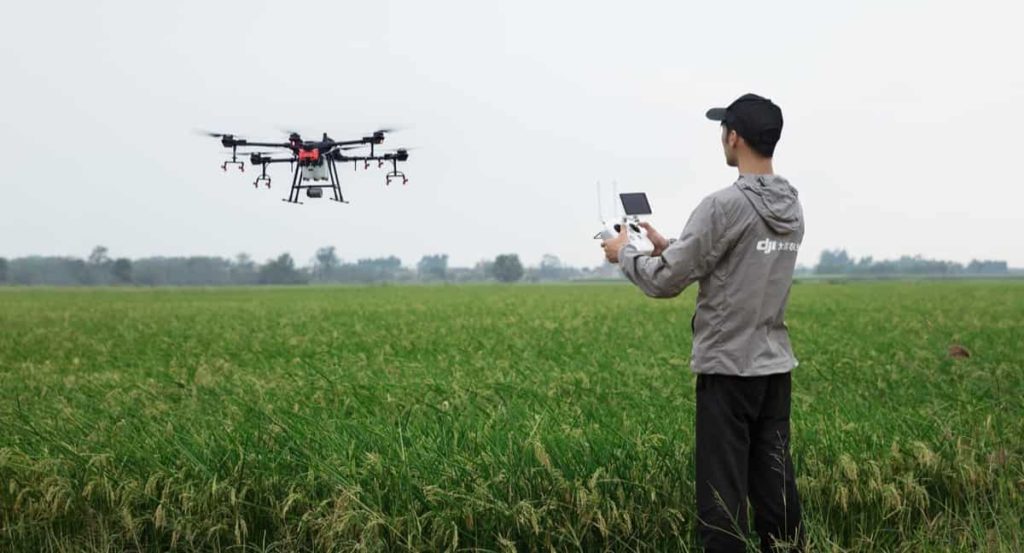
Aerial drones are taking agriculture to new heights by providing farmers with valuable new perspectives in their operations. Many of these drones are also equipped with special imaging technology that can provide important information about plant health across the field. These multispectral cameras can show when plants are affected by varying degrees of crop stress – such as pests, disease, or drought – before it’s visible to the naked eye. Only this insight allows farmers to deal with every threat before it takes hold.
Agricultural drones empower farmers to adapt and adapt to specific environments. The data obtained helps in crop health, crop treatments, crop scouting, irrigation, field soil analysis, and estimation of crop damage. Some common agricultural applications for UAVs include pest control, plant health monitoring, livestock management, soil analysis, and aerial surveys. Plant health monitoring is a good example illustrating the successful use of drones in agriculture.
The health of the farmer’s crops is of utmost importance to achieve maximum yield. There is a wide range of conditions that can adversely affect crop production. Crops are susceptible to pathogens, fungi, and insects. Inadequate soil carbon and nitrate levels also affect plant productivity. Even inadequate water levels can cause an otherwise fertile field to produce poor results. Traditionally, farmers monitored all these conditions through visual observations and soil analysis.
Visual inspections are time-consuming, and they depend on the observer’s skill to spot signs of potential problems. This method is exceptionally inefficient for large-scale farming operations. A soil analysis may take longer than a visual inspection. Trained professionals must take samples, which are often analyzed in a laboratory. Inevitably, the time required for this process introduces lag in the data. Thus, no real-time information is available to the farmer regarding the crops of a particular day.
The future of farming is a digital agriculture
Digitalization has immense potential to help farmers achieve higher and better yields and creates great opportunities to promote resource-rich and sustainable agriculture. Importantly, it has the potential to reach large numbers of farmers, including in less developed countries. Increase knowledge and awareness of on-farm sustainability. It can also help reduce the environmental impact of global food production by enabling more precise application of crop protection products.
Digital technologies and analytics are used to optimize key components of the food system and increase productivity and profitability while reducing environmental impact. Virtually all stages of production, from optimizing crop genetics to managing transportation logistics, have the potential to be digitally integrated in the near future. This digital agricultural revolution will provide farmers with new means and methods to improve resource management, crop quality, and quantity and remain productive in a changing climate.
Challenges in digital agriculture
- High capital cost: This discourages farmers from adopting digital methods of farming.
- Small land holdings: Indian farms are very small in size, and farm plots of 1-2 acres are the most common. Also, leasing agricultural land under various arrangements is widely practiced in India.
- Renting and sharing methods: Due to limited financial resources and small farm plots, renting and sharing platforms instead of directly purchasing equipment and machinery like tractors, harvesters, etc.
- Illiteracy in rural areas: Lack of basic computer literacy hinders the rapid growth of e-agriculture.
Implementation of Digital Agriculture in India
Digital farming tools have emerged to mitigate the challenges faced by smallholder farmers, including low yields and incomes, financial exclusion, and climate change. Digital agriculture also enables other actors in agricultural value chains, from agribusinesses to cooperatives, to increase efficiency in the agricultural last mile. Digital agriculture solutions range widely, from simple voice and text-based advisory services to farmers on feature phones to high-tech tools that use sensor data and analytics to automate farm operations.
The main factor in the slow adoption of digital agriculture in India is the prevalence of isolated smallholder farms in the country, complicating data collection. Additionally, limited access to mechanization tools and frequent natural calamities, such as drought, floods, and excessive monsoon rains, have adversely affected the deployment of digital solutions in the sector.
In case you missed it: Top and Highest Milk Producing Cattle/Cow Breeds in India: Best Guide for Beginners
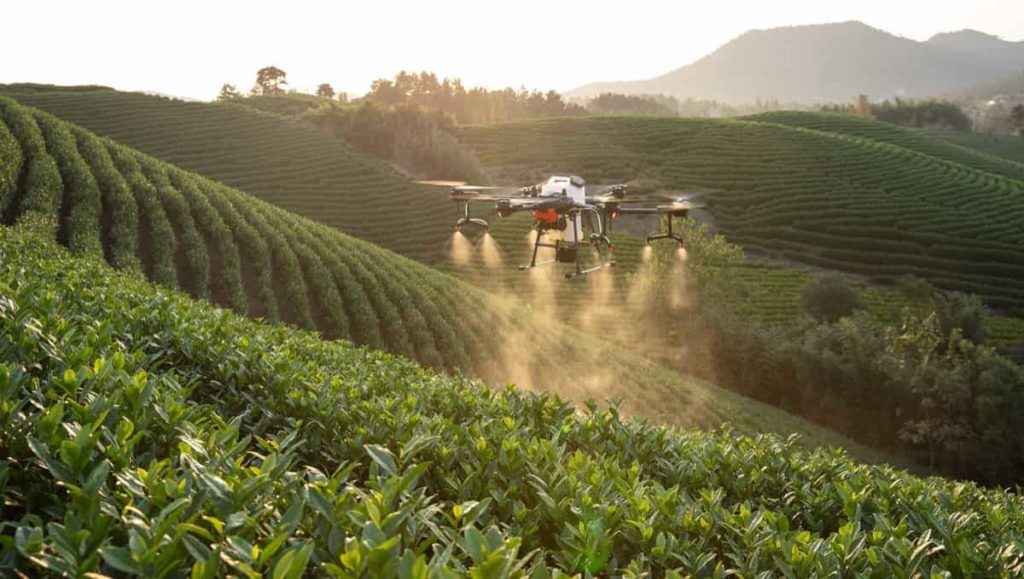
Thus, implementing digital agriculture in a typical Indian small farm would require a customized approach, which could be scaled up and made available to many Indian farms later. The following measures can be implemented to make digital agriculture successful in India:-
- Farmers’ incomes are under greater pressure as input, feed, and other costs increase. It translates into higher financial default rates as farmers find it increasingly difficult to sell enough crops to repay their loans.
- This low income explains the precarious financial conditions in which a typical farmer in India works. Thus, the technology will help to reduce the cost.
- As typical Indian forms are small, there is a better opportunity for plug-and-play hardware in the Indian market. Also, leasing agricultural land under different farming arrangements is widely practiced, so a farmer farming on a particular plot of land may move to another farm plot the following season. In such situations, farmers should invest in portable equipment.
Conclusion
Digital farming provides farmers with insights to make decisions that improve yields. The farmer gets the data, but ultimately, it’s still up to them to use it to best fit their farm. The term digital agriculture is often used to refer to the use of big data in food production, including the Internet of Things (IoT), blockchain technology, artificial intelligence (AI), machine learning, cloud computing, as well as unmanned deployments, included aerial vehicles, and robotics. Digital agriculture can make agriculture more productive and sustainable and use time and resources more efficiently.
- Types of Pesticides Used in Agriculture: A Beginner’s Guide
- Economical Aquaculture: A Guide to Low-Budget Fish Farming
- 15 Common Planting Errors That Can Doom Your Fruit Trees
- How to Make Houseplants Bushy: Effective Tips and Ideas
- Innovative Strategies for Boosting Coconut Pollination and Yield
- Pollination Strategies for Maximum Pumpkin Yield
- The Complete Guide to Chicken Fattening: Strategies for Maximum Growth
- Natural Solutions for Tulip Problems: 100% Effective Remedies for Leaf and Bulb-Related Issues
- Revolutionizing Citrus Preservation: Towards a Healthier, Greener Future
- Natural Solutions for Peony Leaf and Flower Problems: 100% Effective Remedies
- Maximizing Profits with Avocado Contract Farming in India: A Comprehensive Guide
- Natural Solutions for Hydrangea Problems: 100% Effective Remedies for Leaf and Flowers
- The Ultimate Guide to Choosing the Perfect Foliage Friend: Bringing Life Indoors
- From Sunlight to Sustainability: 15 Ways to Use Solar Technology in Agriculture
- The Ultimate Guide to Dong Tao Chicken: Exploring from History to Raising
- The Eco-Friendly Makeover: How to Convert Your Unused Swimming Pool into a Fish Pond
- Mastering the Art of Delaware Chicken Farming: Essentials for Healthy Backyard Flocks
- 20 Best Homemade Fertilizers for Money Plant: DIY Recipes and Application Methods
- How to Craft a Comprehensive Free-Range Chicken Farming Business Plan
- Brighten Your Flock: Raising Easter Egger Chickens for Beauty and Bounty
- How to Optimize Your Poultry Egg Farm Business Plan with These Strategies
- Subsidy for Spirulina Cultivation: How Indian Government Schemes Encouraging Spirulina Farmers
- Ultimate Guide to Raising Dominique Chickens: Breeding, Feeding, Egg-Production, and Care
- Mastering the Art of Raising Jersey Giant Chickens: Care, Feeding, and More
- Ultimate Guide to Raising Legbar Chickens: Breeding, Farming Practices, Diet, Egg-Production
- How to Raise Welsummer Chickens: A Comprehensive Guide for Beginners
- How to Protect Indoor Plants in Winter: A Comprehensive Guide
- Ultimate Guide to Grow Bag Gardening: Tips, Tricks, and Planting Ideas for Urban Gardeners
- Guide to Lotus Cultivation: How to Propagate, Plant, Grow, Care, Cost, and Profit
- Agriculture Drone Subsidy Scheme: Government Kisan Subsidy, License, and How to Apply Online
- Ultimate Guide to Raising Araucana Chickens: Breed Profile, Farming Economics, Diet, and Care
- Bringing Hydroponics to Classroom: Importance, Benefits of Learning for School Students
- Ultimate Guide to Raising Polish Chickens: Breed Profile, Farming Economics, Diet, and Care
- Ultimate Guide to Raising Australorp Chickens: Profile, Farming Economics, Egg Production, Diet, and Care
- Silkie Chicken Farming: Raising Practices, Varieties, Egg Production, Diet, and Care
- Sussex Chicken Farming: Raising Practices, Varieties, Egg Production, Diet and Care